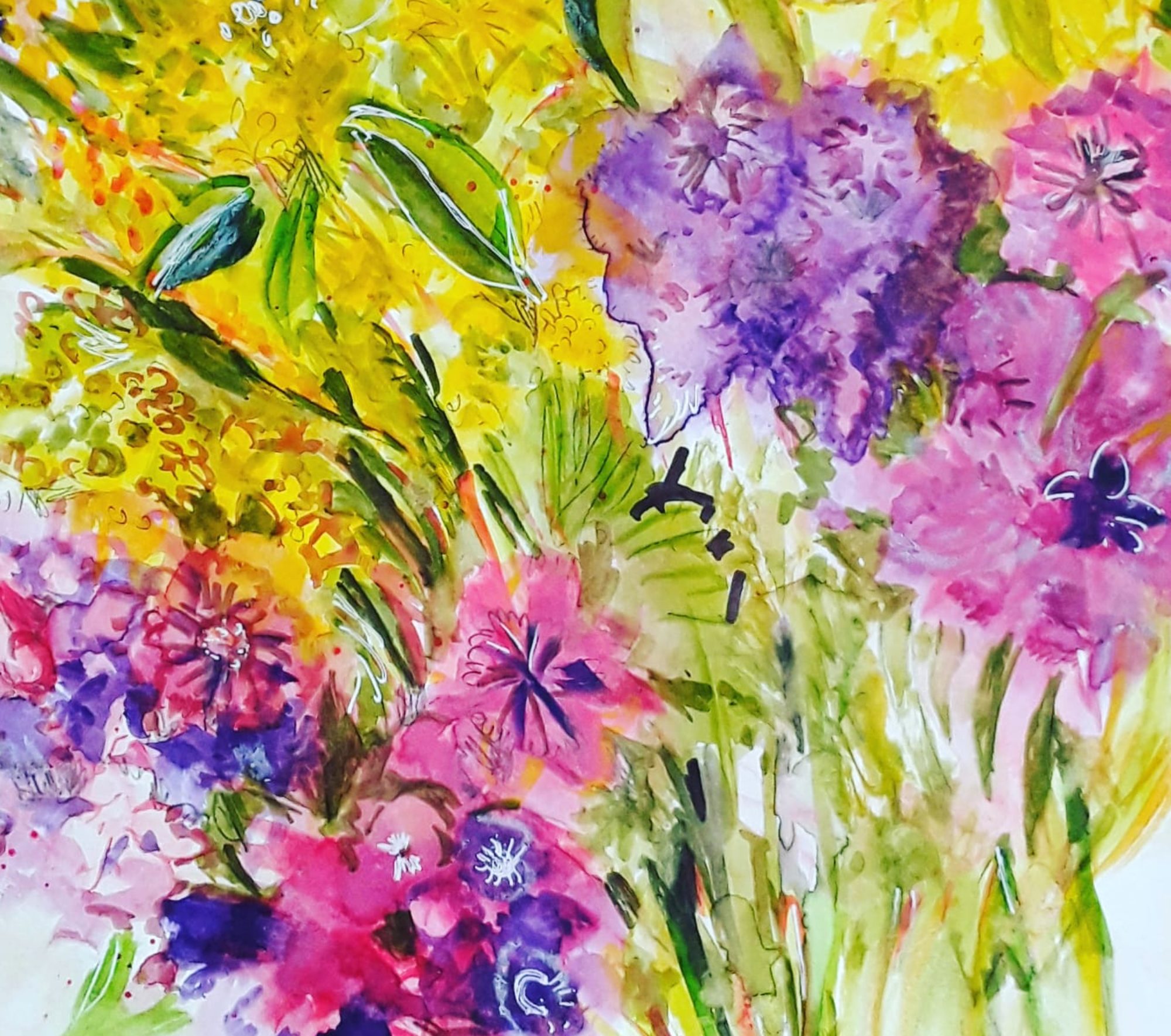
Good morning everyone. Lately I have been working my way through the excellent tutorials in the free Sketchbook Revival course with Karen Abend. Actually, it’s finished now, but I will certainly look out for it next year. In particular I have enjoyed the sections on painting flowers. And I have been trying the new approaches introduced by several of the tutors. For example, using a looser painting technique when observing flowers from life.

To be honest, this was quite difficult to do, as I have always observed each flower carefully before. And then attempted to paint all details on each bloom separately. But here I observed closely first. And then tried to paint the different elements and shapes into flowers that were pleasing in the overall design. Anyway, this was my first attempt and things can only get better! In fact, this exercise ‘Mixed Media Floral Study’ was led by Joy Ting.
Trying New Approaches in Design

This was another exercise that I enjoyed, a simple flower design by Viddhi Saschit. And the tutor broke it down into easy steps, so that I created this reasonably attractive design. Afterwards I felt that I could try to paint another little pattern by myself.
Finally, I just wanted to show you The Tulips on the Table, which I did quite spontaneously in watercolour and oil pastel. And, I like to think that I put into practice some of the new ideas that I learnt. You could see more of my flower pictures here.






